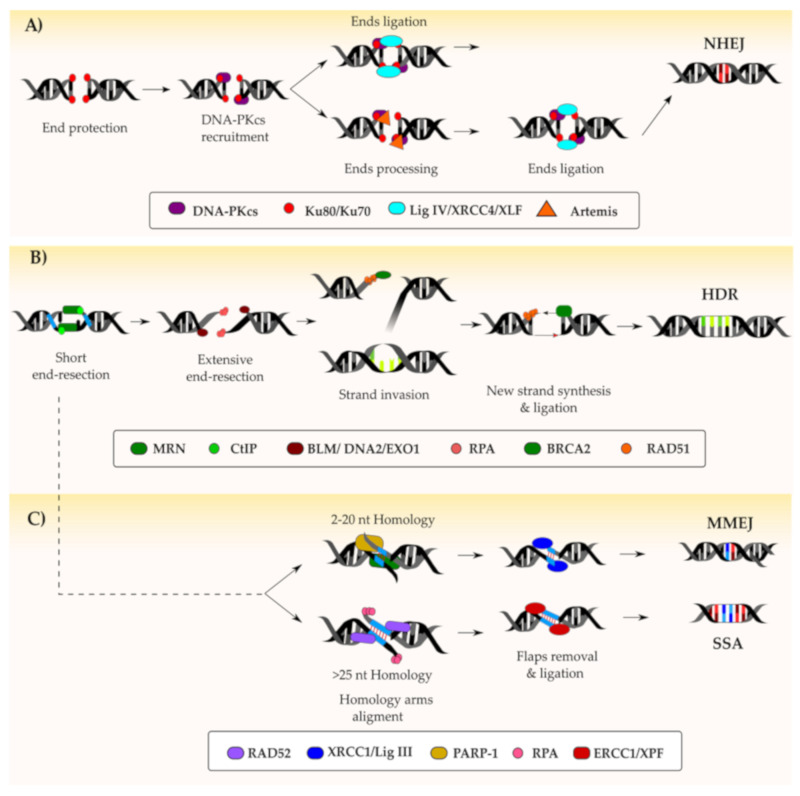Figure 2.
Resolution of a DNA double-stranded break (DSB): Following the recognition and marking of a DSB by the concerted action of key proteins such as ATM (ataxia-telangiectasia mutated), ATR (ataxia telangiectasia and Rad3-related) and DNA-PKcs (DNA-dependent protein kinase catalytic subunit), the repair can follow different pathways. On one hand, if the DNA ends are protected by the Ku70/Ku80 complex, the DSB is generally repaired via the non-homologous end-joining (NHEJ) pathway (depicted in A). In this case, an intermediate end-processing step might be necessary if the protected ends are not compatible. On the other hand, resection of the DNA ends by the MRN/CtIP (MRE11-RAD50-NBS1/C-terminal-binding protein interacting protein) complex results in NHEJ inhibition. Based on the length of homology DNA fragments revealed during end-resection, the DSB can be repaired either via homology-directed repair (HDR) (B) or microhomology-mediated end joining (MMEJ)/ single-strand annealing (SSA) (C). The key factors involved in the DNA repair pathways depicted are indicated within the figure.

